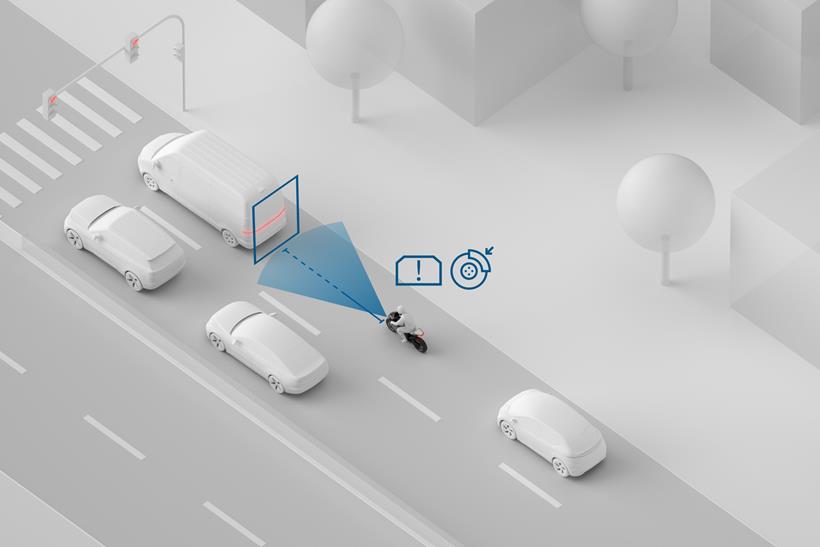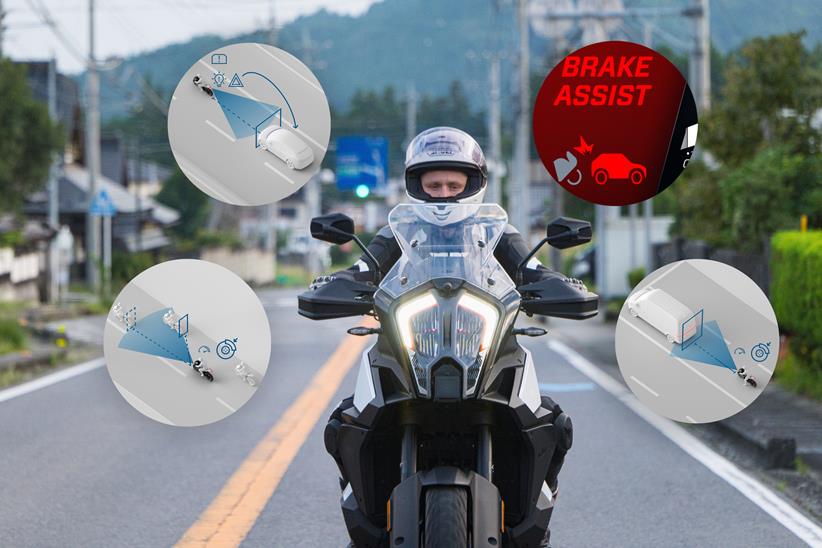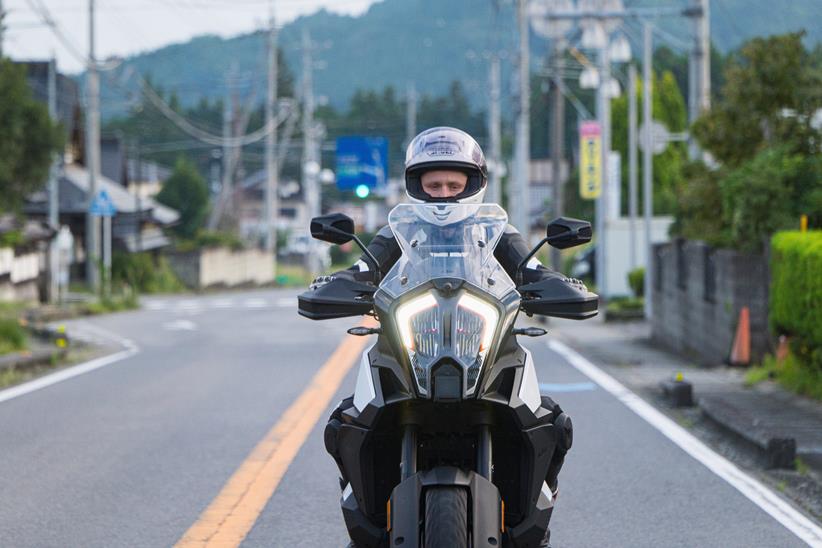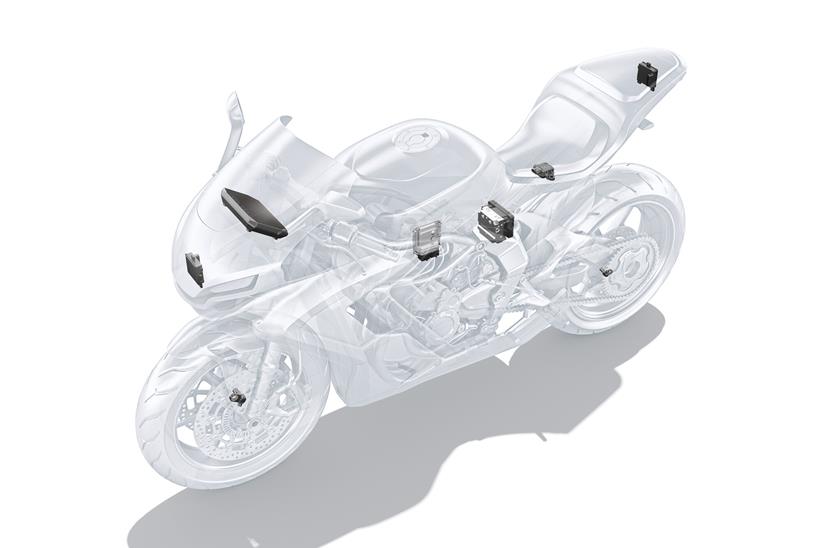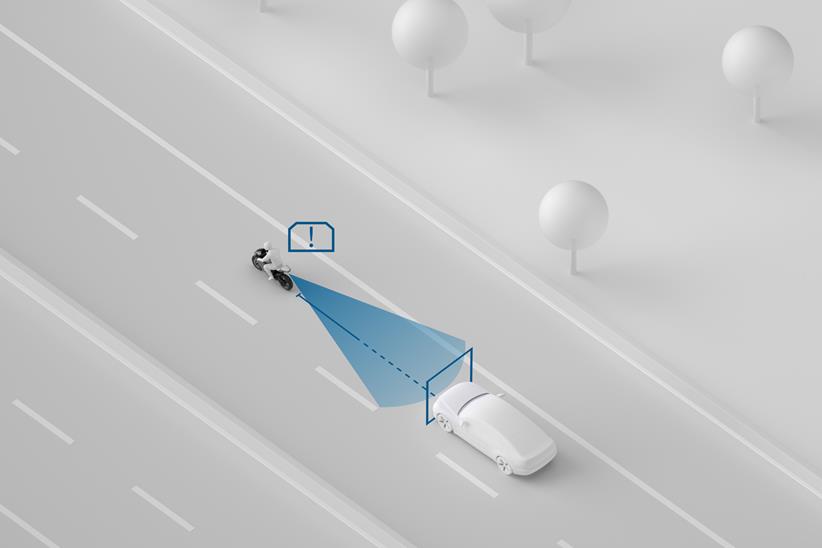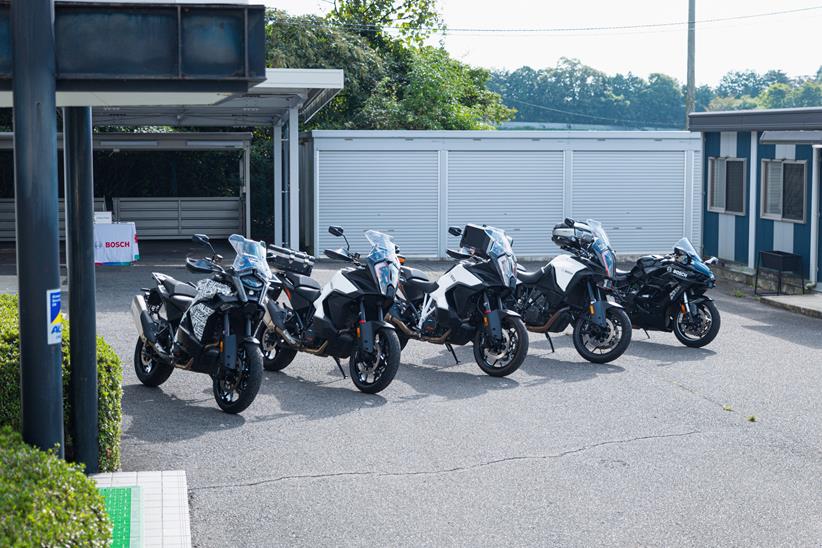Bosch's new radar system will pull away, brake, avoid accidents and even stop for you
Global motorcycle technology company, Bosch are coming to market in 2025 with a range of new radar-guided assistance systems that have the power to bring a bike to a stop behind a vehicle, apply additional brake pressure to prevent accidents, warn other road users they are getting too close, and even pull away from a stop following the car in front.
The system is the second generation of their radar-guided Advanced Rider Assistance Systems (known as ARAS) and will debut aboard an incoming V-twin KTM Super Adventure model using the firm’s AMT (Automatic Manual Transmission) semi-automatic gearbox.
“We’ve always had a good relationship with KTM with new technologies and safety,” President of Two-Wheeler and Powersports at Bosch, Geoff Liersch told MCN. “I think both companies have a clear understanding that we want to push the technology topic in regards safety, but we want to do it in a way that doesn’t take away from the fun of riding.”

These comments came during a recent visit to the firm’s Shiobara Proving Ground in Japan, where the systems were developed, with MCN being amongst the first in the world to sample the new technology aboard the prototype KTM.
“It’s just a historic relationship that works and we’ve had a good experience of bringing multiple technologies to the market and they can – as a company – do that in a reasonable period of time.”
New Bosch systems
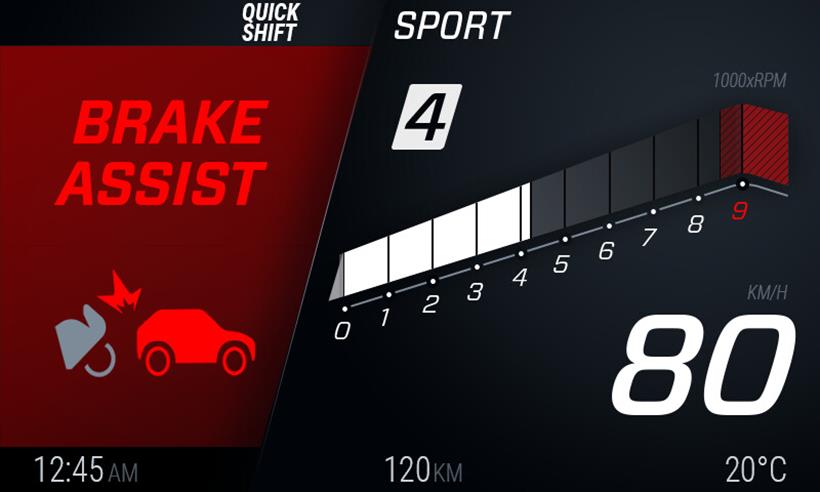
In total, six new systems will be present on the KTM – taking the Bosch-powered Adaptive Cruise Control (ACC) already found on the 1290 Super Adventure S and adding functions including a Group Ride Assist (GRA) to track bikes in front of you when riding together, as well as additional safety systems in a bid to reduce global accident numbers.
The GRA system is able to locate the closest bike in the group and alter the speed of your motorcycle to reflect their riding inputs. It can also track that machine’s movement – meaning it’ll know if they move from one side of the lane to another.
Elsewhere, the Adaptive Cruise function is uprated with Stop & Go, which will likely be the most controversial of the new systems. This is because it can slow the bike down to a complete stop with the car in front, should it be required, before pulling away again with the traffic with the touch of a button.

This is made possible by the incoming clutchless AMT semi-automatic gearbox on the KTM, with the bike changing gears for you in relation to the vehicle in front and coming to a halt without risk of stalling.
Other systems then focus on safety, including Emergency Brake Assist, which will squeeze the front brakes harder to assist the rider, if the system deems there’s going to be a collision. It cannot activate without the rider first applying the brakes and won’t work above 160kph (around 100mph).
“Electromagnetic waves at a certain frequency range are shot out of the radar,” Thomas Maurer, Project Manager for Advanced Rider Assistance Systems explained. “They will be reflected in every direction and some of them will come back.
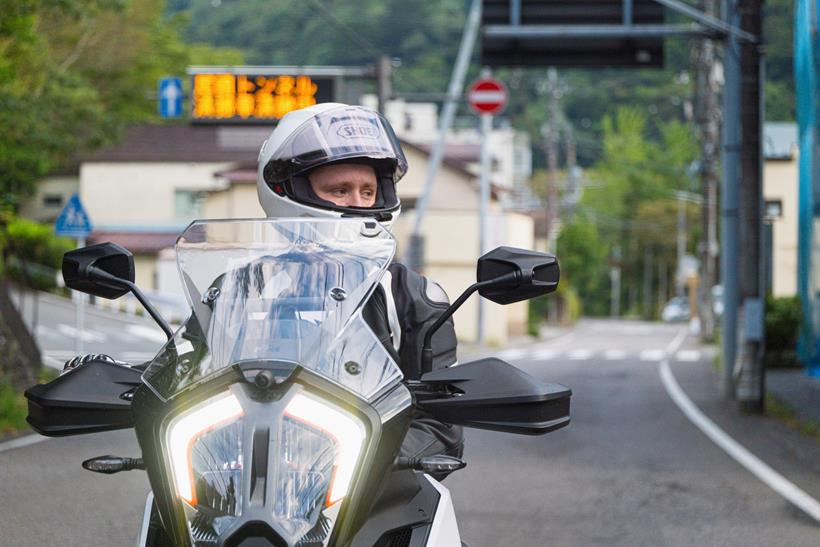
“When the radar receives something, it can detect the distance, the relative speed, and with a certain measurement principle, the direction it’s coming from. All of that, when you combine it with very complicated algorithms, then you can understand where the objects are, where they are moving, and to a certain extent what the vehicles are.”
These radars are located at the front and rear of the motorcycle and are in constant communication with the Engine Control Unit (ECU), Inertial Measurement Unit (IMU) and stability control system in order to fully understand what the bike is doing, as well as the lean angle and pitch.
“The systems are all lean sensitive, so for example, when the ACC applies brakes, and you have a lean angle of zero degrees then we can allow more brake pressure than when you’re at a lean angle,” Maurer continued.
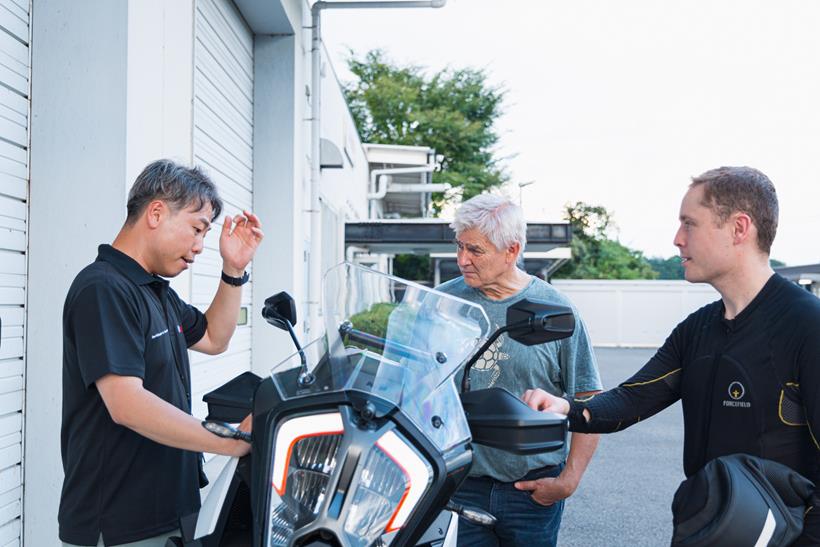
“We have to make sure that the systems and whatever we do to the speed of the motorcycle that it’s safe in every condition and for every motorcycle rider.”
He went onto to confirm that should traction control, or ABS intervene at any stage, the radar systems will deactivate to prevent any additional risk.
This lean sensitivity is also required for the radar beam itself, which will alter to look through a bend as the bike banks over. An active brake fluid pressure system is required to make applications of the brakes without rider input, too.
Where’s it going?

Although the updated ARAS system will arrive on the next generation of KTM Super Adventure, using a semi-automatic AMT gearbox, there is nothing to stop the Austrian firm adding the technology to more of their bikes.
The 1290 Super Duke GT platform for example is expected to climb to a 1390 for 2025 and would be a suitable home for technology. Elsewhere, Yamaha, and Honda already offer a clutchless option on conventional bikes, with Kawasaki’s hybrid duo also opting out of a left-hand lever.
- Related: Yamaha MT-09 Y-AMT review
Ducati have also gone on record to say they are working on a system of their own too. Bosch are hopeful to see the uptake extend past the premium sector though.
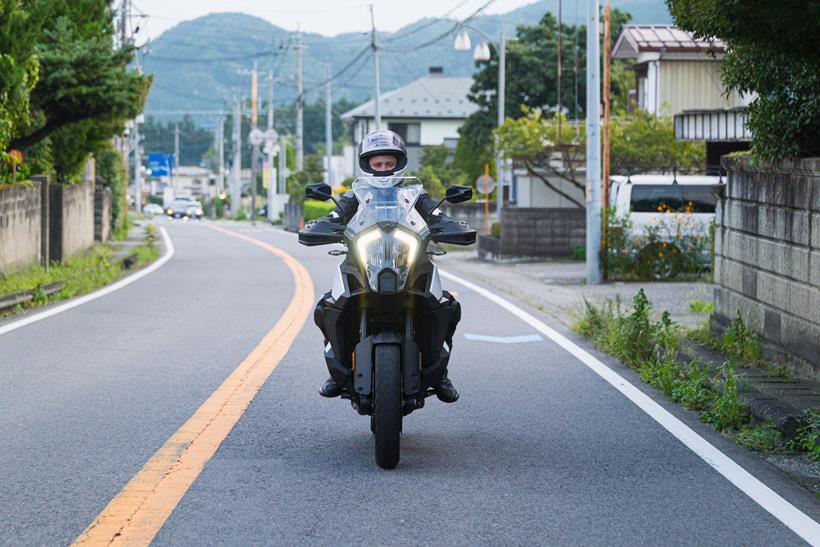
“We would like to see this technology for 10 dollars per bike and for every bike in the world. Then we could actually have a significant impact on accident statistics,” Bosch’s Geoff Liersch told MCN. “Realistically, we’re not going to see it for 10 dollars in the next five minutes, but ABS was the same.
“We started with high end ABS, which was expensive as hell, and we’ve got it down to a price which is accepted and even in emerging markets like India we’re now seeing people requesting ABS for bikes less than 125cc.
“They actually want it, and they are prepared to pay for it, so the attitude changes over time and I expect the same topic will happen here.
“As the volumes come up, we then have the possibility to build different sensors specific to motorcycles and that are cheaper, which we can’t do today because the volume’s not high enough to make it worthwhile.”
What’s on offer?
Adaptive Cruise Control + Stop & Go: This helps keep the rider at a safe distance behind the vehicle in front. If you’re on the motorway at 70mph and you approach a lorry at 56mph, the bike will slow gradually in order to match that speed in front. Once out the way, you can increase back up to the original desired speed.
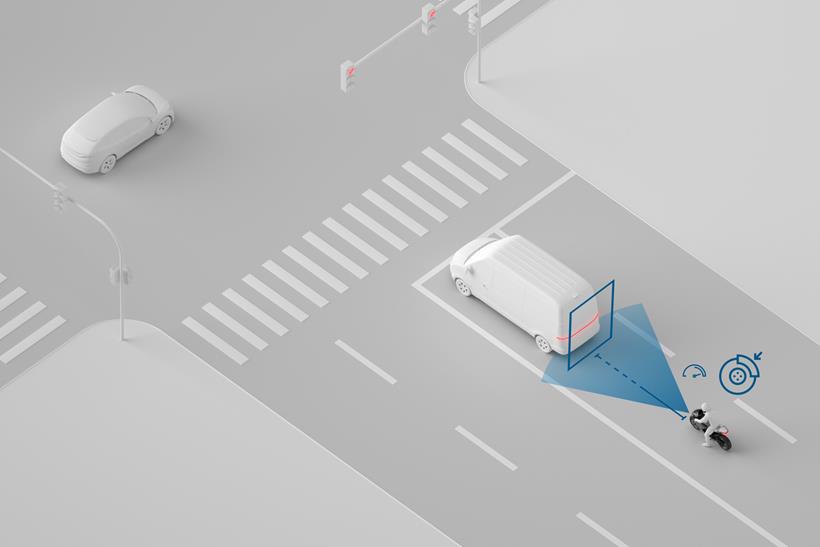
This is now updated to bring the new KTM to a complete stop if needed. It can then pull away with the traffic, once the rider has given approval. Bosch say this function will only work with clutchless semi-auto systems, to prevent riders stalling their bikes.
Group Ride Assist: Based on adaptive cruise control, this function is designed for when riding in a group with other bikes. Rather than focussing on the vehicle in front, it measures the distance to the closest bike in the group and adjust speeds accordingly – aiming to prevent huge gaps when riding in convoy.
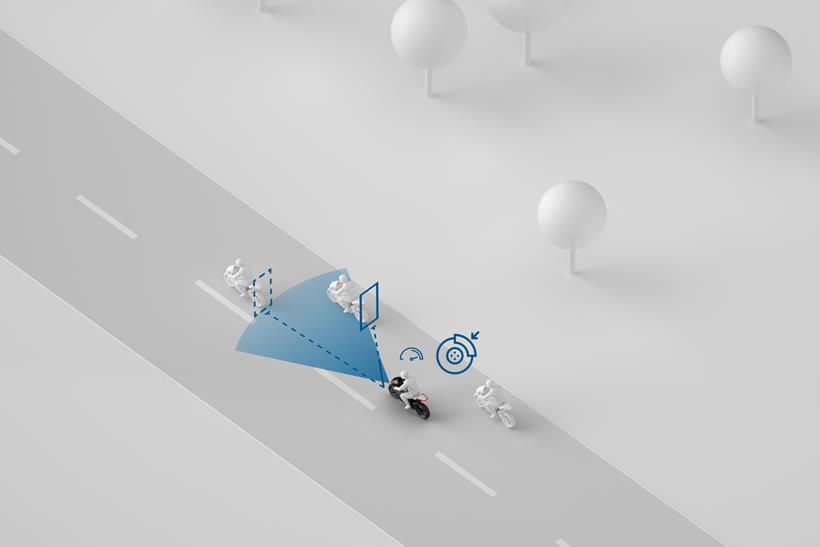
Riding Distance Assist: This function works separately of ACC and stops you tailgating the car in front. It provides deceleration where required to open the gap back up, and can be overridden with sharp throttle inputs for snappy overtakes. There are Sport and Comfort settings, with the former delivering an easier override.
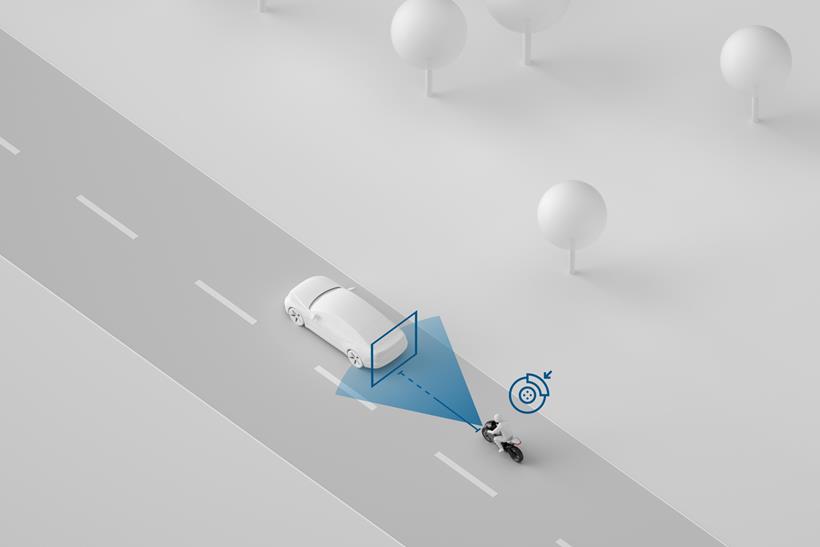
Rear Distance Warning: This is used to help a rider move out of a tailgating situation. The rear radar monitors how close the vehicle behind is getting and notifies the rider through the dashboard if the gap is too small. Blindspot detection is also available.

Rear Collision Warning: This will activate the rear hazard lights to alert the driver behind that there is a risk of a rear end collision, using the radar systems to assess the likelihood of an impact.
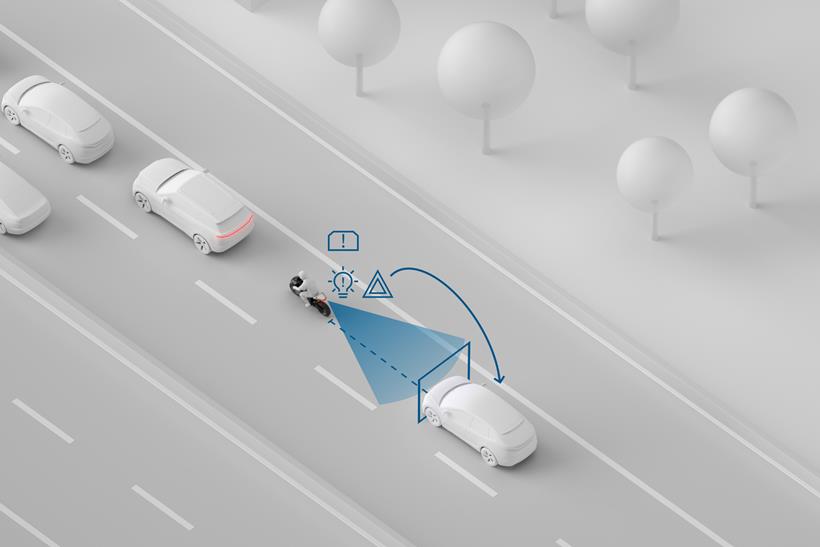
Emergency Brake Assist: For those occasions when you’re not paying attention to hazards in front. This system adds additional braking force through the front calipers to help prevent an accident and can only be activated once the rider has applied some braking force.
Prior to this, a warning will appear on the TFT dash, plus two haptic taps of the rear brake to warn the rider.
